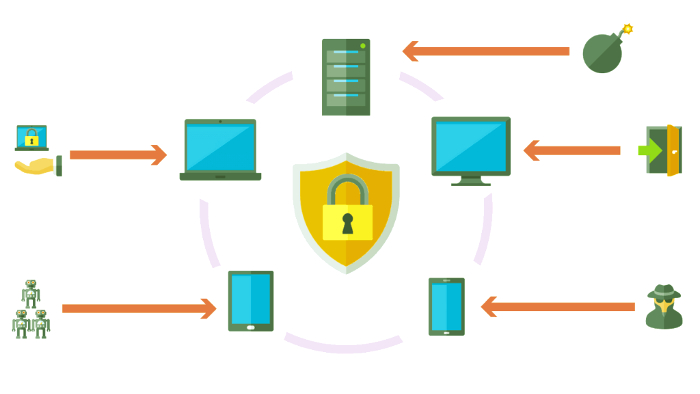4 Key Considerations When Choosing Your Next Anti-Phishing Solution
Cyberattacks come in all shapes and sizes, but phishing attacks are becoming more and more common. These attacks exploit human nature by using social engineering techniques. The most dangerous part about these attacks is that they rely on organizations’ weakest link: employees.
Choosing the right anti-phishing solution is crucial to the security of your business. There are a few key considerations you should take into account when making your decision. First, consider what type of phishing attacks you are most susceptible to. Then, think about how much protection you need and what features are most important to you. It is also important to consider how easy the solution is to use and deploy, as well as its scalability.
Key Considerations for Phishing Protection
1. Anti-Phishing for Email
Email is the most common and well-known delivery mechanism for phishing content. Email can deliver malicious content in a number of forms, including:
- Infected Attachments: Email attachments may include Office documents with malicious macros or infected PDFs designed to drop malware or launch attacks using Windows Powershell.
- Malicious Links: Links within emails may point to credential harvesting pages or ones serving malware to unsuspecting users.
- Business Email Compromised (BEC) Attacks: BEC attacks use a compromised account or lookalike email domains to trick the recipient into taking some action, such as paying a fake invoice or one edited to replace a legitimate vendor’s bank details with those of the attacker.

Every organization's email security solution should be comprehensive, protecting against all possible attack vectors. This includes having the ability to sandbox and evaluate attachments that might be suspicious or malicious, investigating links for potential phishing, and using AI to identify business email compromise (BEC) emails. To do this analysis, we look at the contents of a phishing email and other indicators that might suggest an account has been compromised.
2. Anti-Phishing for Productivity Applications
Email is only one of the attack vectors that cybercriminals use for performing phishing attacks. Productivity applications such as Microsoft Teams, Microsoft OneDrive, Google Drive, and Microsoft SharePoint are commonly used in these attacks as well.
Like email, all of these platforms are capable of sharing links and files. An attacker can compromise a platform, embed malicious content, and then either wait for a user to fall for the phish or send them a sharing link directly from a compromised account.
3. Anti-Phishing for Endpoint Devices
Employees should be aware of watering hole attacks, in which an attacker creates a malicious site that a user is likely to visit. For example, an attacker may compromise a site commonly used by an employee or create their own and work to have it ranked by search engines. When an employee visits the site or searches for a certain term, they visit the site, which can harvest their credentials or install malware on their machines.
- Phishing Site Detection: New phishing sites are created every day, but they often have similar functionality. An anti-phishing solution should be capable of identifying and blocking malicious sites based upon their malicious functionality.
- Credential Reuse Detection: Credential reuse is a common problem, and many employees reuse the same credentials across business and personal accounts. An anti-phishing tool should compare stored hashes to inputted passwords to detect the use of the same credentials for multiple accounts.

By implementing these functions, an anti-phishing solution minimizes an organization’s risk of compromised accounts, regardless of how the malicious content reaches the device.
4. Anti-Phishing for Mobile Devices
Mobile devices are a common target for phishers. This is for a variety of reasons, including:
- Multiple Communications Channels: Mobile phones contain apps for email, corporate communications platforms, SMS messaging, and social media. All of these can carry malicious content and links, providing attackers with a variety of options for performing phishing attacks.
- “Always On” Connectivity: Most people constantly have their mobile phones with them and often check messages within moments of receiving them. This increases the probability that an attacker will have a successful attack with minimal wait time.
- URL Shortening: Phones’ small screens mean that only a fraction of a page’s URL is shown in the address bar. This makes it easier to disguise phishing links as legitimate URLs.
All of these factors mean that mobile users are extremely vulnerable to phishing attacks. Any corporate anti-phishing solution should have mobile support and protection for common mobile-based phishing attack vectors.
In summary, Phishing attacks can be performed in a number of ways and take advantage of several different attack vectors. When selecting an anti-phishing solution, it is important to consider all of the potential ways that an organization’s employees can be attacked.